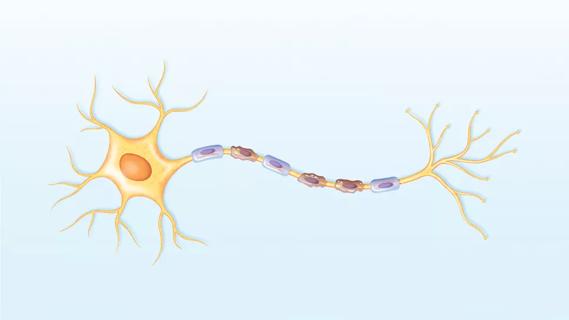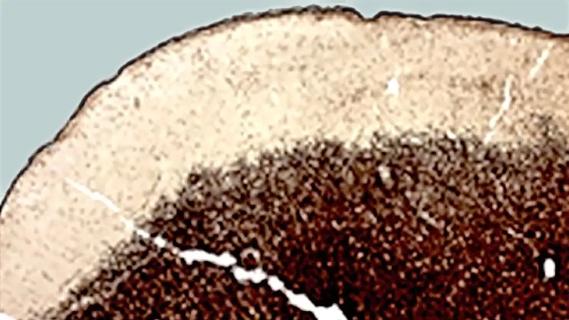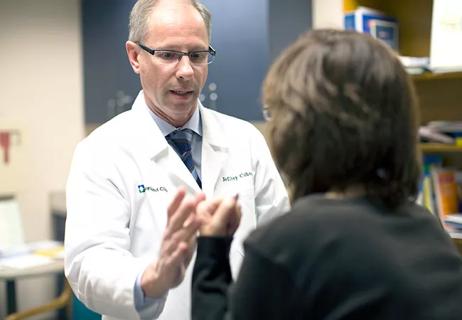Research avenues to keep an eye on in MS and NMOSD diagnostics and therapeutics
Across the variety of cutting-edge research presented at the recent ACTRIMS Forum 2022 convened by the Americas Committee for Treatment and Research in Multiple Sclerosis, three presentations especially stood out to Robert Bermel, MD, Director of Cleveland Clinic’s Mellen Center for Multiple Sclerosis Treatment and Research.
Cleveland Clinic is a non-profit academic medical center. Advertising on our site helps support our mission. We do not endorse non-Cleveland Clinic products or services. Policy
“These novel studies could lead to new ways of diagnosis and treating multiple sclerosis (MS) and diagnosing and monitoring neuromyelitis optica spectrum disorder (NMOSD),” says Dr. Bermel. “They offer intriguing solutions to currently unmet needs.”
Consult QD spoke with Dr. Bermel and two of his Mellen Center colleagues to recap these three presentations and explain why they matter.
The prospective Central Vein Sign in Multiple Sclerosis (CAVS-MS) pilot study compared the diagnostic prediction of the central vein sign and paramagnetic rim lesions with the 2017 McDonald criteria for MS diagnosis. The study involved 97 patients newly referred for MS evaluation from 10 North American sites, 44 of whom turned out to meet MS diagnostic criteria. An additional 14 met criteria for either clinically isolated syndrome (CIS) or radiologically isolated syndrome (RIS).
The presence of paramagnetic rim lesions — iron-laden macrophages and microglia accumulations at the periphery of lesions that can be detected by MRI and are hypothesized to reflect chronic active lesions — were found to be highly specific for MS (88% for MS only, and 95% for MS plus CIS plus RIS). Sensitivity was better than previously reported (80% for MS alone in the current study vs. approximately 50% in prior studies).
“In this first multicenter study investigating the diagnostic potential of paramagnetic rim lesions for MS, we found high specificity and greater sensitivity than previously observed,” says the study’s principal investigator, Daniel Ontaneda, MD, PhD, a neurologist with the Mellen Center. “We believe this improved performance can be attributed to studying a cohort of patients early in the disease course.”
The paramagnetic rim lesion was also extensively discussed during a North American Imaging in Multiple Sclerosis Cooperative workshop at the ACTRIMS Forum. Criteria for evaluation of paramagnetic rim lesions were discussed, as were the results of the pilot study.
“Findings from the pilot study indicate that paramagnetic rim lesions might be a useful diagnostic tool for MS,” Dr. Ontaneda notes. “Perhaps more importantly, however, we have gained a better understanding of the disease by establishing that chronic active lesions may occur from the very beginning of the disease.”
The CAVS-MS pilot study has also led to a large multicenter NIH grant (U01) to further study the diagnostic potential of the central vein sign and paramagnetic rim lesions in 400 patients at 11 sites in North America over two years.
The N-MOmentum multicenter, randomized, placebo-controlled trial of inebilizumab for treating neuromyelitis optica spectrum disorder (NMOSD) yielded new data on imaging and blood biomarkers of the disease. Professor Bruce Cree of the University of California, San Francisco, reported that MRI gadolinium contrast enhancement was seen in the optic nerve in 51% of participants and in the spinal cord in 18% in the absence of an NMOSD attack.
“These findings of subclinical contrast enhancement in patients with NMOSD raise several questions about the role of surveillance imaging for the disorder, something that has not routinely been part of standard clinical practice. Further research is needed to validate these data in other cohorts and to understand the pathological basis for these radiological findings,” says Amy Kunchok, MD, a neurologist with the Mellen Center.
Professor Cree also reported serological biomarker data from the N-MOmentum trial, including elevated levels of glial fibrillary acidic protein (GFAP), an intermediate filament protein predominantly expressed by astrocytes, in cerebrospinal fluid and serum within one week of a clinical attack. Patients treated with inebilizumab had lower serum GFAP levels compared with those receiving placebo. The study also found that serum neurofilament light (sNfL) correlated with higher attack-related disability.
“These findings suggest that serum GFAP may be a useful serological biomarker to detect clinical activity in NMOSD,” notes Dr. Kunchok. “GFAP may also be helpful for monitoring therapeutic response. Serum NfL might be used to prognosticate patients at greatest risk for worsening disability. Further studies are needed to validate these serological biomarkers in large longitudinal NMOSD cohorts.”
Dr. Jennifer Gommerman of the University of Toronto presented research on human fecal microbial transplants in experimental autoimmune encephalitis (EAE) mice models of MS. Although it has been previously established that fecal transplant from cases of MS increases the incidence and severity of EAE, the association of the gut microbiome with MS progression has not been well studied.
The investigators obtained fecal material from healthy young and old first-degree human relatives of the same sex living in a single household. After transplant into EAE models, distinct microbial communities developed depending on whether mice received the transplant from an aged or young person. Mice that received a transplant from an older donor exhibited less microbiome diversity, showed poorer recovery from initial relapse and evolved into a progressive phenotype. Microbiome (fecal) transplant from an older human had the effect of converting the microglial phenotype and EAE disease course in a young mouse to one more similar to an old mouse.
“It is well known that younger people with MS make a more complete recovery despite more severe relapses, and older individuals with MS are far more likely to develop a progressive disease course,” Dr. Bermel observes. “This preliminary research suggests that the microbiome may be a partial mediator of these effects, and may represent an actionable mechanism to influence the disease — possibly with the use of probiotics or prebiotics. If this suggestion is confirmed, it could have significant clinical implications.”

Early experience with the agents confirms findings from clinical trials

Findings challenge dogma that microglia are exclusively destructive regardless of location in brain

New review distills insights from studies over the past decade

Updated consensus approach helps clinicians efficiently improve diagnostic accuracy

The disease is not a barrier to pregnancy, but risks from disease-modifying therapies must be managed

In search of optimal imaging biomarkers, best methods for long-term follow-up

Risk of new MS activity is small in those older than 55 with stable disease who stop MS therapy

$1.1M award expands follow-up to six years with focus on clinical endpoints